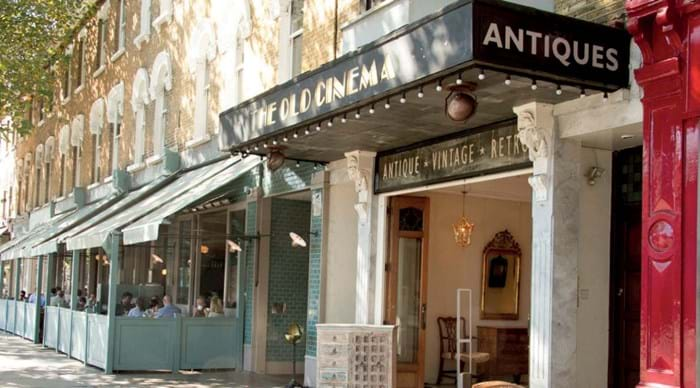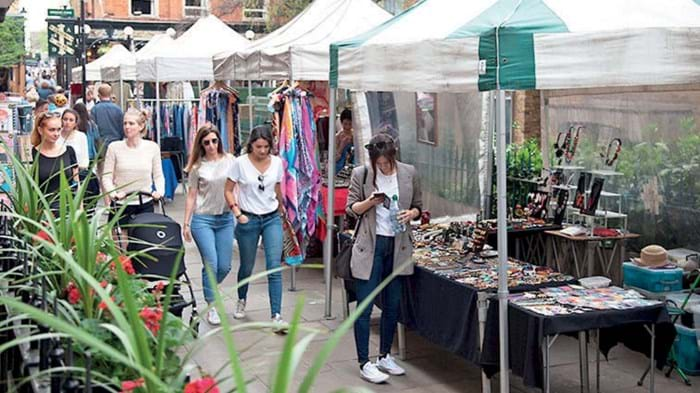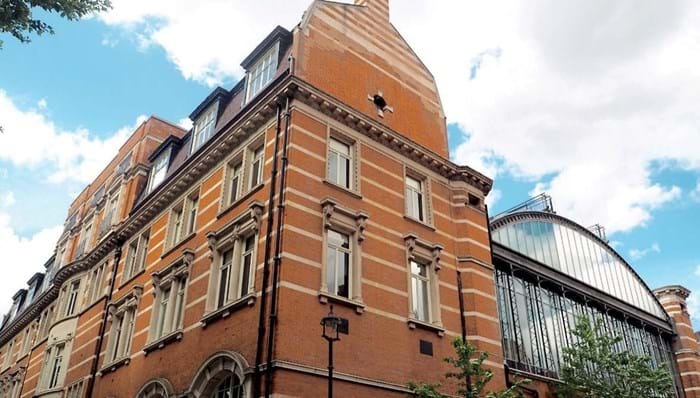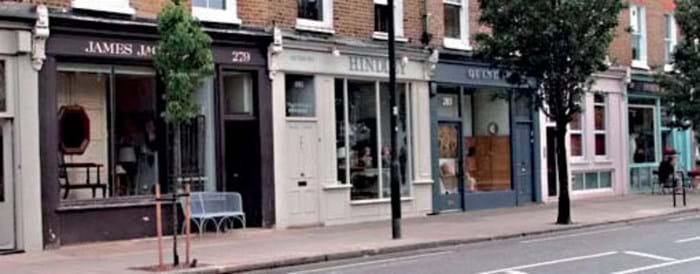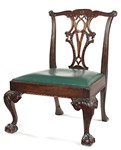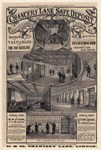
GRAYS
Where: 58 Davies Street, London, W1K 5AB
When: Monday-Friday 10am-6pm, Saturday 11am-5pm
Nearest tube: Bond Street
The once-ubiquitous London antiques centre is now an endangered species. Slowly, one-by-one, formerly thriving venues have wilted under pressure from rising rents and property developers. But there are still beacons of light.
Grays antiques centre on Davies Street has faced its fair share of challenges. Business rates in this prime location have rocketed while the pedestrian visiting the off-Bond Street emporium today is still faced with walking past the building plot that is the Crossrail project.
With footfall down, maintaining ‘business as usual’ hasn’t been easy. Part of the site – the Grays Mews building once housing close to 50 dealers – will close in the near future when the lease on the building ends.
However, Grays is undoubtedly through the worst. This part of Crossrail’s new Elizabeth line is scheduled for completion by the end of the year, by which time most of the Mews dealers will have been rehoused – some in the newly refurbished main building, others in Alfies in Church Street, Marylebone.
Owner Bennie Gray describes the centre as the last place left that provides “affordable space for antiques dealers at the epicentre of the London art and antique dealing world”. He hopes to keep it as such.
Glory restored
The Grays dealers are situated in a Grade II-listed Edwardian building designed as a two-floor showroom for water closet manufacturer John Bolding and Son. It was a near-derelict site before it was restored to its former glory by Gray back in 1977.
The quality of objects on sale is consistently high. Many of the dealers are members of leading trade associations BADA and LAPADA, with a handful trading here since the earliest days.
As one might expect near Bond Street, period jewellery is the main stock in trade, but there are also dealers in quality Chinese and Japanese ceramics, Art Nouveau metalwork and militaria.
Budget range: £35 for a late Georgian glass rummer rising to £50,000-plus for precious stone jewellery.
PORTOBELLO MARKET
Where: Portobello Road, London, W11
When: Saturdays
Nearest tube: Ladbroke Grove or Notting Hill Gate
It claims to be the world’s greatest street market and on a fine summer’s day, when it is thronging with dealers, hawkers, browsers, eccentrics and buskers, there is little than can compare with it.
The road takes its name from Portobello Farm, once located nearby in Golborne Road. In the 19th century, the present long, winding street was built. The seeds of the antiques market were sown in the 1940s as rag and bone men joined the established fruit and vegetable market. Dealers in antiques and bric-a-brac came next in the 1950s.
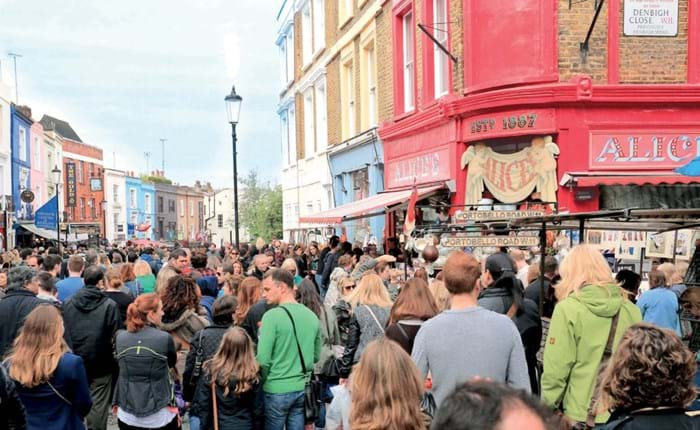
Portobello may have ballooning rents but the area is still home to some 20 antiques arcades. Photo: Earl Smith.
Back then it was a rundown, bohemian place, with a diverse social mix.
Portobello Road and the surrounding area have since gentrifried, with rising property prices, ballooning rents and rates producing predictable results. This has turned many stalls and arcades into emporiums of tourist-tat.
Several antique arcades have closed in recent years. Lipkas, which took up half a terrace on the junction with Westbourne Grove, and housed more than 100 dealers, was replaced by a fashion chain in 2009. The art and antique market that took place in the 20th Century Theatre on Saturdays has also gone. According to the Save The Portobello Road Market campaign, the street had 100 antique arcades 50 years ago. Today, it has around 15 to 20.
But despite the relentless onslaught of hedge fund bankers, tourists and coffee chains, the market goes stubbornly on, and it remains a delight for anyone interested in antiques. A plethora of stalls sell everything from antiquities to coins, militaria, silver, china, jewellery, books, timepieces, glassware, furniture, vintage clothing, tribal art and paintings.
Budget range: small opalescent Art Nouveau vase: £25; 1920s 9ct gold trombone-link watch chain: £690.
COVENT GARDEN
Where: East Colonnade, Covent Garden Market Building, WC2E 8RF
When: Monday 10.30am-7pm
Nearest tube: Covent Garden
coventgarden.london/ markets/antiques
There has been a market in Covent Garden since a piazza was laid down in 1630 by Inigo Jones, and the area has long been a magnet for traders, bohemians, writers, actors and ladies of the night, bridging, as it did, the City with the West End.
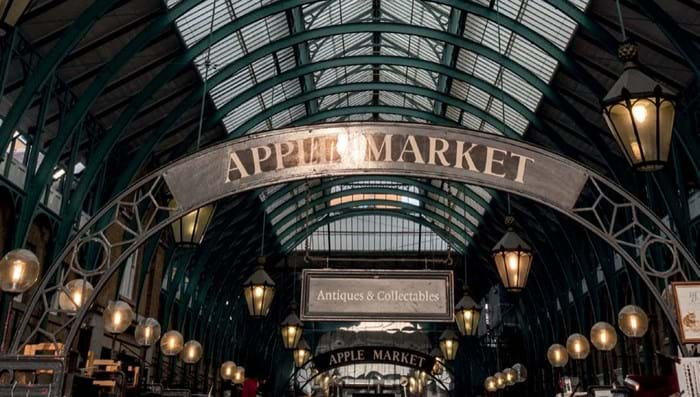
The Apple Market in London’s Covent Garden, the location of an antiques market on Mondays. Photo: Dietmar Rabich / Wikimedia Commons.
Today, you can still enjoy Covent Garden and its proud history of trading thanks to fierce resistance in the 1970s to planners at the GLC who wanted to demolish the entire site after the fruit and vegetable market relocated to Nine Elms.
The antiques market takes place in the Edwardian Jubilee Market Hall on Mondays and attracts knowledgeable, bona-fide dealers offering everything from porcelain to rare books, silver, jewellery, militaria, Art Deco and mid-century collectables.
Budget range: 1940s British Army soldier’s compass: £29; Edwardian sterling silver picture frame: £60.
THE OLD CINEMA
Where: 160 Chiswick High Road London, W4 1PR
When: Monday to Saturday: 10am-6pm & Sundays 12-5pm
Nearest tube: Turnham Green
The Old Cinema is an antiques centre bursting with curiosities, and one can easily while away an afternoon here poking about in its corners.
It opened in 1979 in a former Edwardian picture palace. One of its more romantic claims to fame during its fallow years is that it was used for storing parachutes during the Second World War.
Today, its attractive Art Deco shop front leads into 10,000sq ft of space housing a cornucopia of quirky delights: Victorian mahogany dining tables, Art Deco cabinets, film memorabilia, shop and transport signage, fashion ephemera and industrial chic cupboards and mirrors.
It’s a popular haunt for local media types looking to decorate Victorian terraces and interior designers, so items tend to be very on trend.
Budget range: a £70 glass vase by Julian MacDonald to a pair of Dutch leather Deco chairs, £1595.
BERMONDSEY MARKET
Where: Bermondsey Square, London, SE1 3UN
When: Friday 6am-2pm
Nearest tube: Bermondsey or Borough
Bermondsey Antiques Market is one of London’s great institutions.
Properly called the ‘New Caledonian market’ (it was originally located near the Caledonian Road in Islington), it moved south of the river in 1947 and by 1960 had become synonymous with secondhand goods and bric-a-brac.
In its pomp there were up to 300 stalls here a week – benefiting from the buzz of the Swinging Sixties and a curious law known as ‘marché ouvert’.

Some 50-100 stands still operate at Bermondsey, defying the regeneration of the square that began in 2006.
This medieval French legal concept, allowing for the open sale of stolen goods between the hours of sunset and sunrise in certain designated markets in a city, somehow continued until 1995 when scandal finally led to an amendment to the Sale of Goods Act.
More of a threat to the long-term future of the market was the much-promised redevelopment of the site, which overlies the foundations of a Norman abbey.
The regeneration at Bermondsey Square, that began in 2006, led to the closure of the antiques warehouses and shops that had operated here for a generation. But the market itself refused to lie down, operating in rain or shine amid the building site.
Like many of London’s regular antiques markets, Bermondsey – now run by specialist market management group Sherman and Waterman – does live a little on its former glories. However, on a clement Friday morning it can still attract 50-100 stands with plenty of business still conducted to a small crowd at setting-up time. A great institution and a great survivor.
Budget range: from a £1 mudlark find to £580 for a Victorian coromandel dressing box with silver fittings.
CAMDEN PASSAGE
Where: Camden Passage, just off Upper Street in Islington, N1 8EA
When: Wednesdays & Saturdays
Nearest tube: Angel
Camden Passage is just that: a pedestrian alleyway built in 1767, lined with quaint houses and shops. The antiques market began in the 1960s.
In common with several London markets, the number of traders has depleted over the years, as the big high-street names capitalise on the area’s popularity.
In a now familiar pattern, the Mall Antiques Arcade, which housed around 40 dealers, closed in 2008 to be replaced by a youth fashion chain (see also Antiquarius in the King’s Road and Lipka’s in Portobello), despite concerted efforts to save it by both dealers and locals.
There are nonetheless still four antique market areas to explore: Annie’s Market, Camden Passage Market, Charlton Place Market and Pierrepoint Market, all within spitting distance of one another, along with an array of permanent shops.
You can find a wide range of things here, ranging from cheap and cheerful vintage to the very best in Japanese works of art and Art Nouveau jewellery. It’s also a very popular destination for lovers of good-quality vintage clothing.
Budget range: from a 1940s sequinned crepe gown at £160 to a Meiji masterpiece in six figures.
ADAMS FAIRS
Where: The Lindley Hall, Elverton Street, SW1P 2QW
When: Sundays monthly, 10am-4.30pm
Nearest tube: Victoria
The Royal Horticultural Hall opened its doors in 1904 as an exhibition hall for the RHS. ‘The Horti’ has been the venue for a monthly Sunday fair since the 1970s – making it the longest-running event of its type in the capital. Adams Antiques Fairs continues to run the event that attracts around 140 stalls and a traditional morning queue.
Matthew Adams, who in the early 1980s set up the Stables Market in London’s Camden Lock, also runs the Frock Me! vintage fair, held at Chelsea Old Town Hall or the Kensington Town Hall at dates throughout the year. Frock Me! attracts around 60 exhibitors from the UK and France, with the June 10 event including a new vintage and antique jewellery fair on the first floor at Kensington Town Hall.
Budget range: £5-500 for vintage and antique stock.
LILLIE ROAD
Where: Fulham, West London
When: Monday to Saturday. For times, check with individual dealers
Nearest tubes: Fulham Broadway and Hammersmith
Although it was only a country lane until the 19th century, today Lillie Road is renowned for decorative antiques. The first antiques shops began to surface here in the 1980s as dealers searched for lower rents within a stone’s throw of Kensington, Chelsea and Fulham.
From a handful of shops, Lillie Road has developed into a considerable force in the world of decorative antiques – the usual mix of traditional and painted furniture, mid-century and post-war design, the quirky and the whimsical, spread across a score of dealers.
There’s usually plenty here at the affordable end of the home interiors budget, and it’s a worthwhile starting point for the inexperienced buyer with an eye for the unusual.
Budget range: £16 for a 1960s enamelled Butlins badge to £8500 for a mid-20th century 26-arm cut-glass chandelier.
ALFIES
Where: 13-25 Church Street, Marylebone, NW8 8DT
When: Tuesday-Saturday 10am-6pm
Nearest tube: Marylebone
Opened in the Edwardian buildings of a former department store on Church Street in 1976, Alfies Antique Market is London’s original antiques centre.
Following an extensive refurb in 1988, the complex covers 35,000sq ft over five floors. The city’s largest indoor emporium has been joined over the past four decades by close to 20 antiques shops along the east end of Church Street, selling a mix of traditional and decorative antiques in the mid-market price range.

Alfies Antiques Market maintains its edge as a place to shop for the different and the decorative. Photo: Earl Smith.
Alfies maintains a cool and funky edge that distinguishes it from Grays, its sister centre off Bond Street. It is still a place for vintage clothes and bric-a-brac offered from small pile ’em high booths, while the Quad area, opened in 2005, spotlights 20th century design with a strong current emphasis on Italian post-war furniture and lighting.
Alfies sits in an uncelebrated area that boasts a collection of speciality shops, galleries and creative businesses. Lesson Grove isn’t London’s most elegant ward – council estates, a bustling street market and the industrial legacy of Regent’s Canal have set the tone – but signs of gentrification are everywhere.
Westminster council, which owns some 80% of the properties in the area, has unveiled a 20-year, £1.2bn regeneration blueprint and, as part of the plan, has pledged to favour art and antiques businesses, with the aim of making this spot a rival to Portobello Road.
Recent initiatives include an expanded second edition of a street market – Antiques Anonymous Street Market is planned for June 24 – while this summer Alfies launches an area for Middle Eastern art, antiques and design named ALFayez.
The initial 20-plus dealers to open in the space are predominantly from Grays Mews (near Bond Street) that was scheduled for closure at the end of May. An ALFayez launch party is planned later in late June after Ramadan.
Budget range: £10 for a Midwinter plate to £7850 for a pair of 1950s armchairs by Ico Paris.
KENSINGTON CHURCH STREET
Where: Kensington Church St, W8
When: Check with individual dealers
Nearest tube: Notting Hill Gate
Spread along the length of Kensington Church Street and scattered down its pretty side streets are more than 40 antiques dealers. Some of the world’s leading experts in their respective fields have chosen the Royal Borough of Kensington & Chelsea as their base.
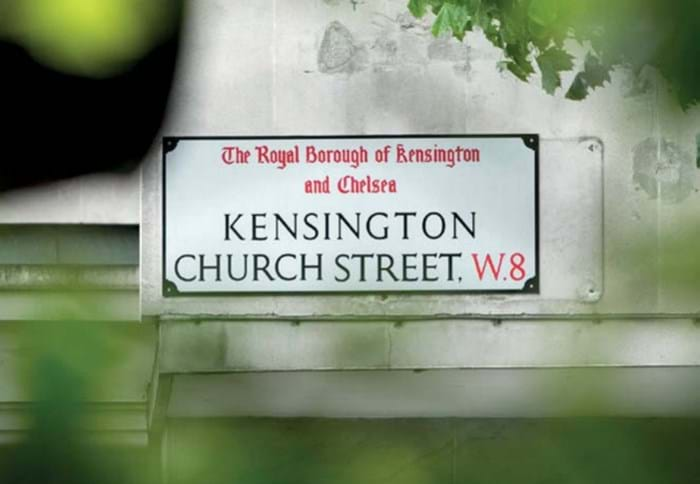
Kensington Church Street, where more than 40 antiques dealers are located.
Most dealers on Kensington Church Street are members of the two main British trade bodies: the street has the highest concentration of BADA members of any area in the country.
Quality here goes without saying. But Ken Church Street dealers are also eager to throw off any suggestion that London’s archetypal antiques street – its Georgian frontages a place of pilgrimage for connoisseurs for over a century – might be a little intimidating or too old-fashioned for the 21st century zeitgeist.
Kensington Church Street may not have the cool of Pimlico Road or the easy appeal of Lillie Road or Church Street – but its shops embrace a broad range of period objects from traditional English furniture, clocks and porcelain to 19th century grandeur and decorative arts from the Aesthetic movement to modernism.
Budget range: £35 for an 18th century delft tile to seven-figure sums for pieces of Islamic and Chinese art.
OLD SPITALFIELDS
Where: 16 Horner Square, London E1 6EW
When: Thursday 10am-8pm
Nearest tube: Liverpool Street
Old Spitalfields Market in the East End boasts a long, proud and tumultuous history. There has been a market on this site for over 350 years. Successive waves of immigration to the area, from Huguenots to Irish, Jews and Bengalis, and the development of London’s docklands, cemented the market’s strength as a trading centre.
In 1991 the wholesale fruit and vegetable market relocated to Leyton, and the site – comprised of fine Victorian buildings and a 1920s extension – went on to be redeveloped in the early 2000s.
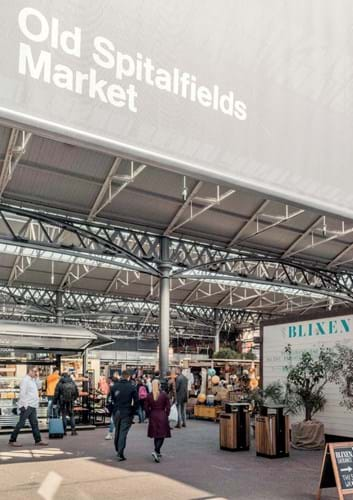
Old Spitalfields Market attracts a hip local demographic, resulting in stock that leans more towards 20th century retro and vintage items than antique.
Today’s antiques market, which has taken place every Thursday in the restored Victorian market hall for around 15 years, is a sister event to Bermondsey and Covent Garden, managed by the same company. It quickly established itself as a lively addition to the London trade, thanks to its range of stock and imaginative displays.
However, an ill-advised redevelopment last year means Spitalfields feels increasingly like a place to buy a good lunch rather than a fine antique. Stalls have been squeezed out – dealers estimate that roughly half the market, or between 50 and 80 stallholders, have gone. The attractive raffishness of the market is also waning, not helped by the replacement last year of old market stalls with sleek new wooden booths. Is Spitalfields, historically one of London’s greatest, grittiest markets, slowly turning into little more than a feeding station for city brokers? Let’s hope not.
Eclectic footfall
That said, it is still a lively, noisy, chatty place, busy with browsers and bargain hunters, fashionistas and businessmen rubbing shoulders with bearded hipsters as they tuck into their ramen noodles.
The local demographic, which is as cool as it gets, means much of what’s on sale leans towards 20th century retro and vintage items. However, there’s something to satisfy most interests, including silver, glass, lacework, books, maps, militaria and tribal art. Celebrities spotted have included Gilbert and George, Tracey Emin, Penelope Cruz and Kelly Hoppen.
Budget range: Leni Riefenstahl book of photographs: £20; 1930s Homberg hat: £40; vintage film posters from £35.

